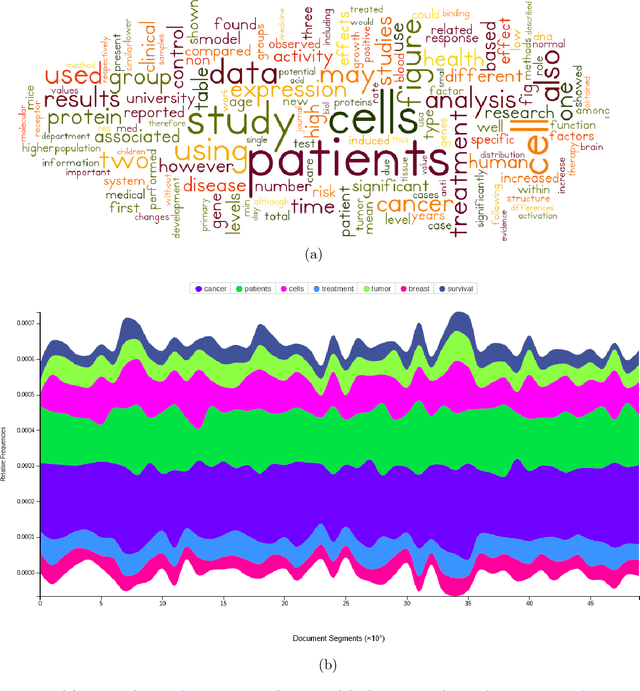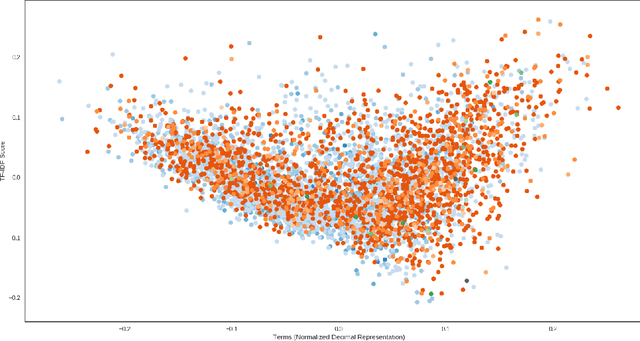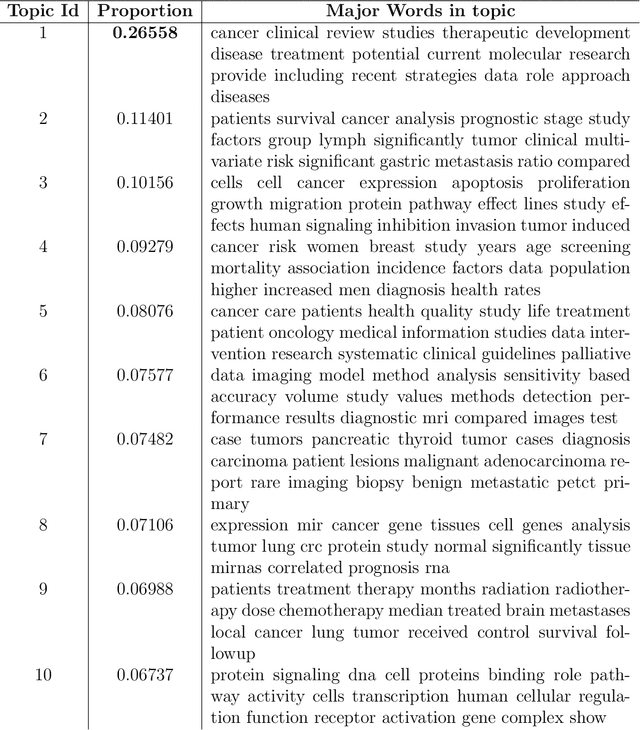Ramesh Singh
Visual Exploration and Knowledge Discovery from Biomedical Dark Data
Sep 28, 2020



Abstract:Data visualization techniques proffer efficient means to organize and present data in graphically appealing formats, which not only speeds up the process of decision making and pattern recognition but also enables decision-makers to fully understand data insights and make informed decisions. Over time, with the rise in technological and computational resources, there has been an exponential increase in the world's scientific knowledge. However, most of it lacks structure and cannot be easily categorized and imported into regular databases. This type of data is often termed as Dark Data. Data visualization techniques provide a promising solution to explore such data by allowing quick comprehension of information, the discovery of emerging trends, identification of relationships and patterns, etc. In this empirical research study, we use the rich corpus of PubMed comprising of more than 30 million citations from biomedical literature to visually explore and understand the underlying key-insights using various information visualization techniques. We employ a natural language processing based pipeline to discover knowledge out of the biomedical dark data. The pipeline comprises of different lexical analysis techniques like Topic Modeling to extract inherent topics and major focus areas, Network Graphs to study the relationships between various entities like scientific documents and journals, researchers, and, keywords and terms, etc. With this analytical research, we aim to proffer a potential solution to overcome the problem of analyzing overwhelming amounts of information and diminish the limitation of human cognition and perception in handling and examining such large volumes of data.
Metaphor Detection using Deep Contextualized Word Embeddings
Sep 26, 2020



Abstract:Metaphors are ubiquitous in natural language, and their detection plays an essential role in many natural language processing tasks, such as language understanding, sentiment analysis, etc. Most existing approaches for metaphor detection rely on complex, hand-crafted and fine-tuned feature pipelines, which greatly limit their applicability. In this work, we present an end-to-end method composed of deep contextualized word embeddings, bidirectional LSTMs and multi-head attention mechanism to address the task of automatic metaphor detection. Our method, unlike many other existing approaches, requires only the raw text sequences as input features to detect the metaphoricity of a phrase. We compare the performance of our method against the existing baselines on two benchmark datasets, TroFi, and MOH-X respectively. Experimental evaluations confirm the effectiveness of our approach.
 Add to Chrome
Add to Chrome Add to Firefox
Add to Firefox Add to Edge
Add to Edge